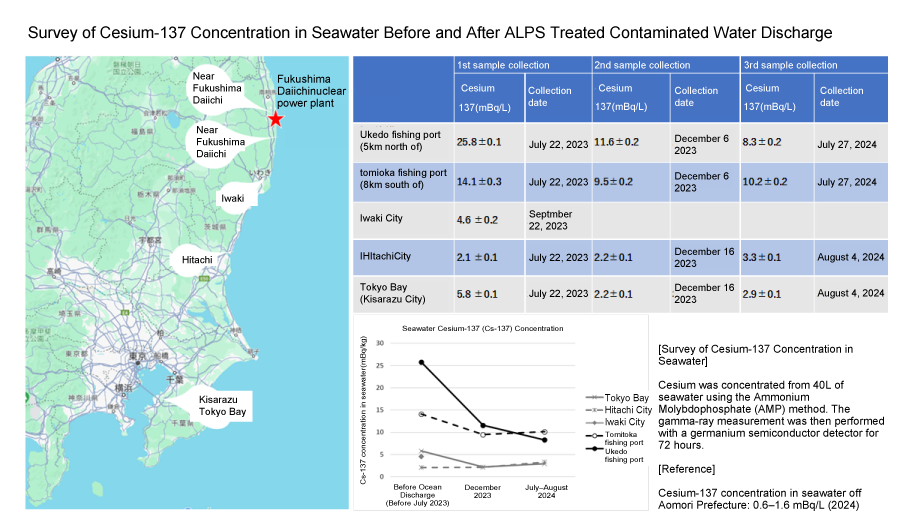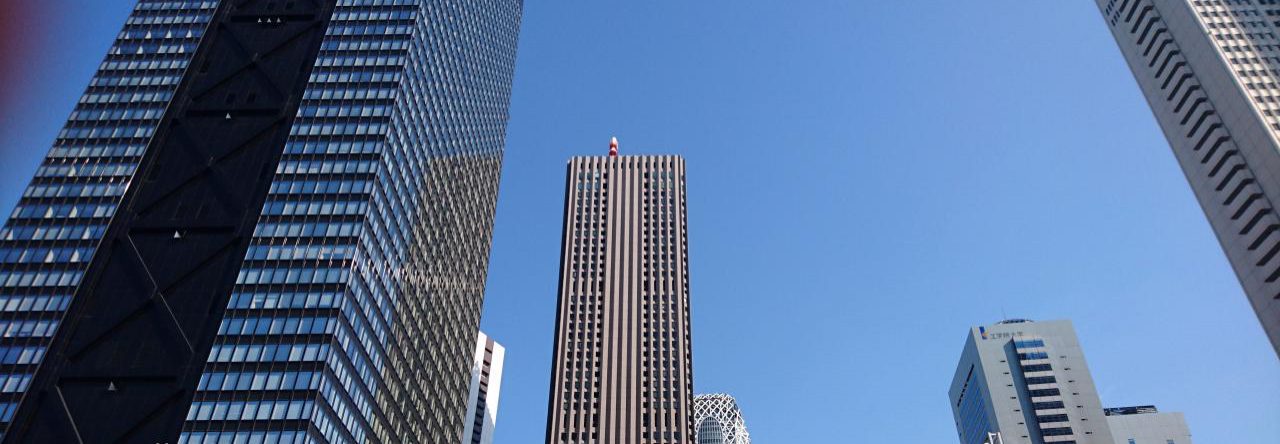Since August 24, 2023, the discharge of treated water accumulated at the Fukushima Daiichi Nuclear Power Plant into the Pacific Ocean has begun. Therefore, in December 2023, seawater samples were collected and the concentration of cesium-137 was compared with seawater samples collected before July. This time, in July and August 2024, the third round of seawater sampling was conducted, and the results have been added.

All measurements were conducted for 259,200 seconds using a germanium semiconductor detector (GCD-70200).
For the measurement of tap water or seawater, extremely low detection limits are required. Tap water is also not “ND” (Not Detected). Before March 11, 2011, the nationwide average radioactivity level in tap water was 0.04 mBq/kg (Japan Chemical Analysis Center: FY2008 analysis data). According to environmental radiation monitoring surveys conducted around nuclear facilities, seawater measurements (outside Fukushima) typically show results of approximately 1–3 mBq/kg, regardless of location.
At our measurement facility, with the cooperation of the Citizens’ Nuclear Information Center, we employ a concentration method called the AMP method. Using a chemical reagent known as ammonium phosphomolybdate, we concentrate a 40–50 L sample over a period of about three days. The concentrated sample is then measured for a long duration using a germanium semiconductor detector.
We measure drinking water around you (including spring water and well
water) as well as seawater in each area. Please consult us regarding the
sample quantity and fees.
